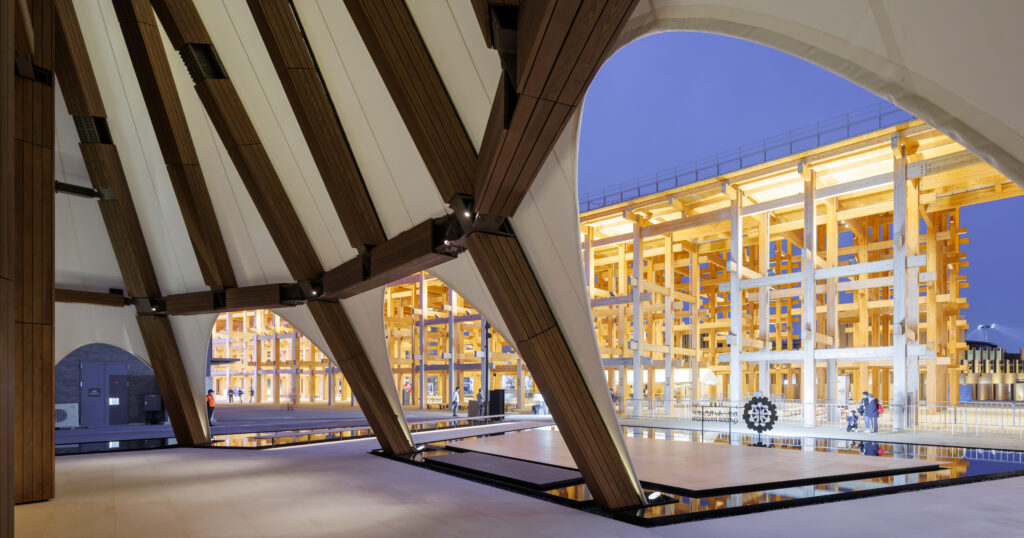Architizer’s Vision Awards are back! The global awards program honors the world’s best architectural concepts, ideas and imagery. Start your entry today, and take advantage of the Early Entry prices!
Expo 2025 Osaka is officially open, offering a rare chance to experience some of the world’s most inventive architecture in one place. Held on the artificial island of Yumeshima in Osaka Bay, this year’s World Expo brings together 158 participating countries under the theme “Designing Future Society for Our Lives.”
The six-month event runs through October 13 and is anchored by the Grand Ring — a 675-meter-wide timber structure designed by Sou Fujimoto that connects the entire site. Built using traditional Japanese joinery and recognized by Guinness World Records as the world’s largest wooden architectural structure, the Ring acts as the physical and symbolic spine of the Expo, guiding visitors through a landscape of global ideas.
From bold visions about climate and health to more personal explorations of culture, identity and cooperation, Expo 2025 presents architecture as one of its most immediate storytellers. Pavilions by celebrated names like Lina Ghotmeh, Coldefy, Carlo Ratti Associati and Kengo Kuma are already drawing attention, along with thoughtful contributions from Dutch, Swiss and Uzbek teams focused on reuse, material cycles and cultural exchange.
This collection highlights 10 national pavilions worth seeking out, digging into the ideas behind their designs and what may happen to them once the Expo wraps.
Brazil Pavilion
By Studio MK27, Osaka, Japan
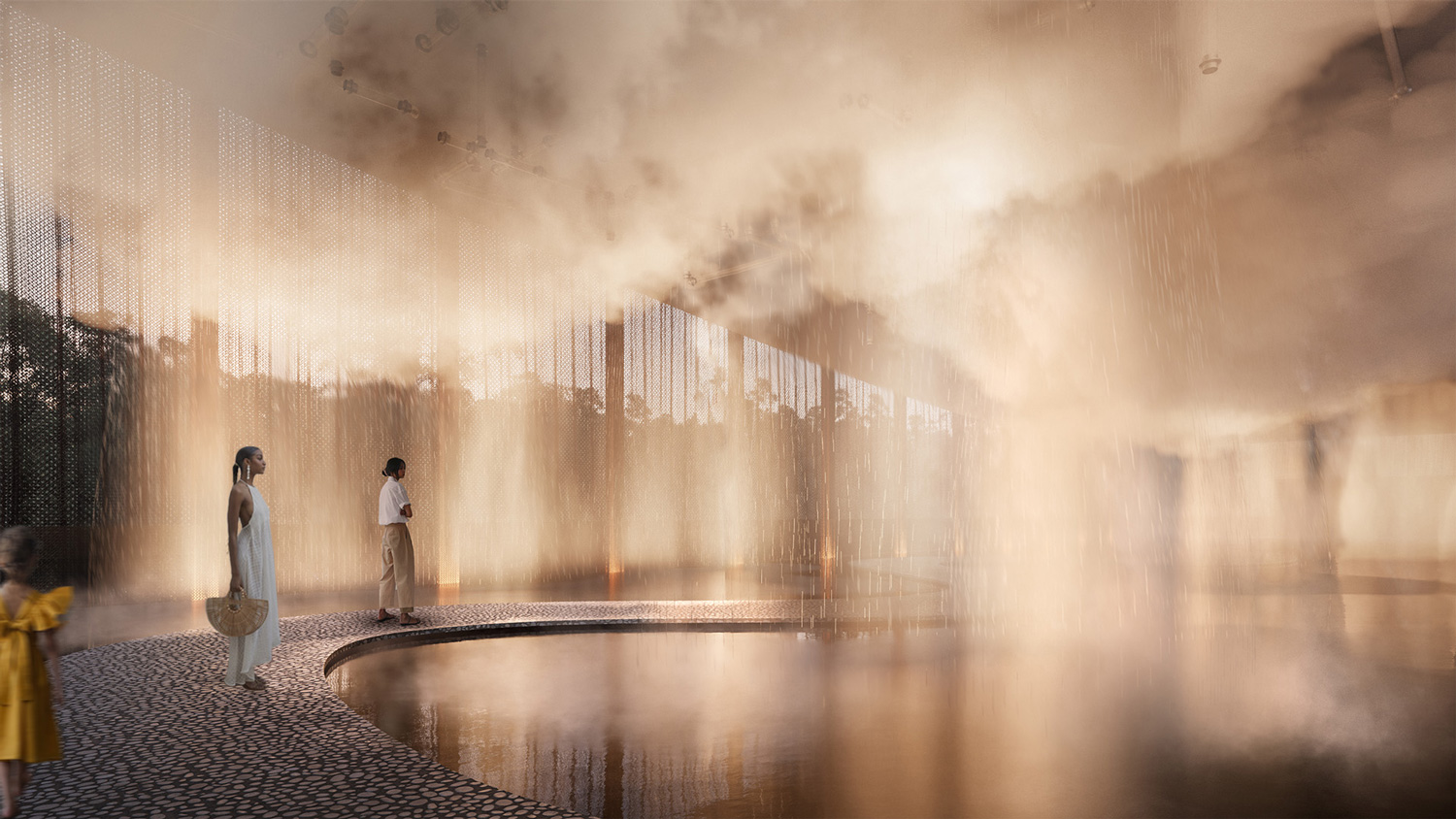 This pavilion explores water as the source of life through the concept of “Flying Rivers” — moisture-laden clouds that drift above the Amazon. A curved canopy rises over Osakan soil, sheltering a vapor-filled interior wrapped in a fluid metallic mesh. Visitors follow a slow, upward path through ramps that build anticipation, leading to a rooftop experience where an artificial river reflects the exhibition.
This pavilion explores water as the source of life through the concept of “Flying Rivers” — moisture-laden clouds that drift above the Amazon. A curved canopy rises over Osakan soil, sheltering a vapor-filled interior wrapped in a fluid metallic mesh. Visitors follow a slow, upward path through ramps that build anticipation, leading to a rooftop experience where an artificial river reflects the exhibition.
The structure uses rented modular metal elements, commonly found in temporary construction, reducing waste and allowing for easy disassembly. Built with the logistical challenges of the site in mind, the pavilion is both atmospheric and efficient. Designed to leave a light footprint, the structure is built to be taken apart as effortlessly as it was raised.
France Pavilion
By Coldefy and Carlo Ratti Associati, Osaka, Japan
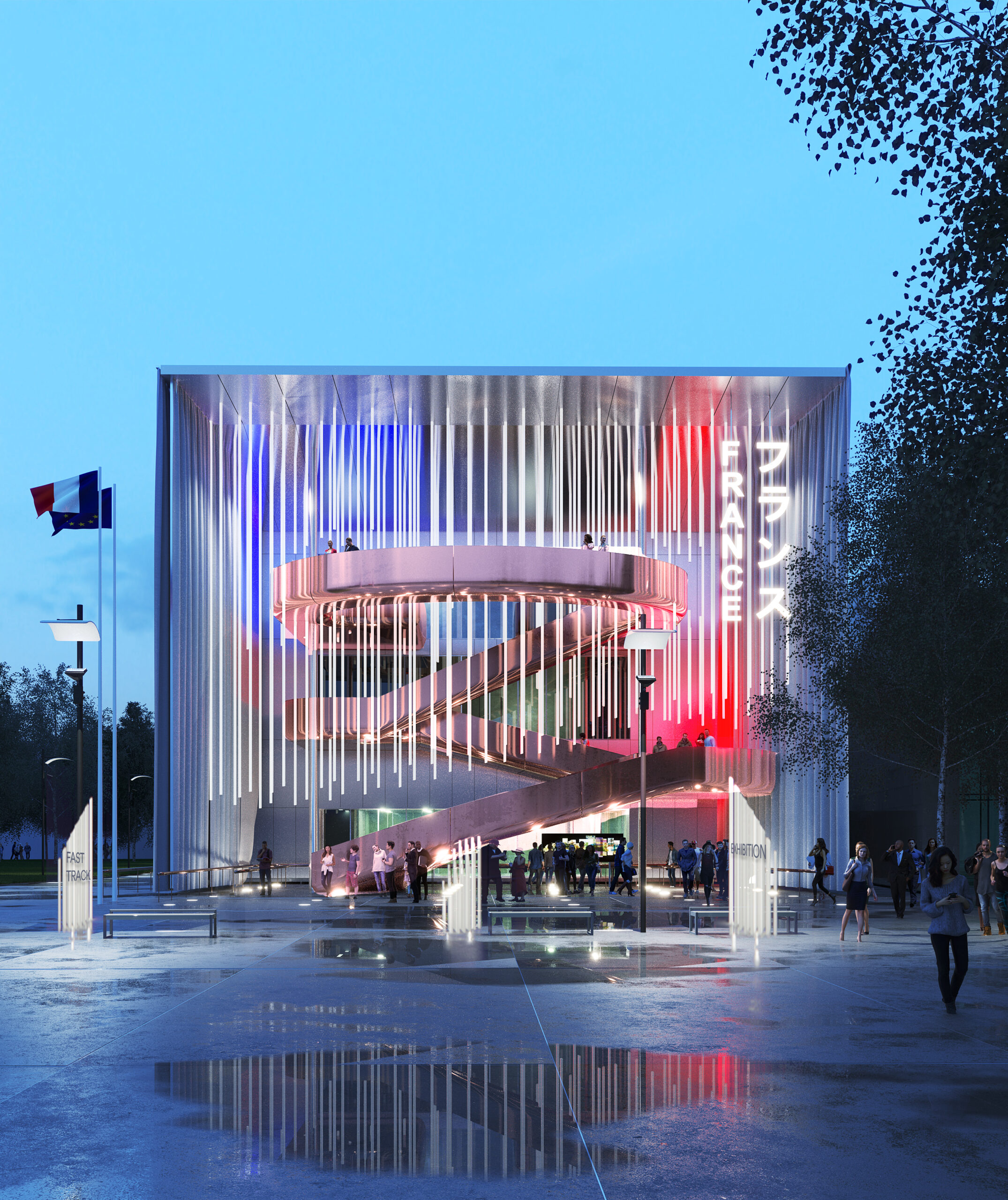
Image courtesy of Carlo Ratti Associati
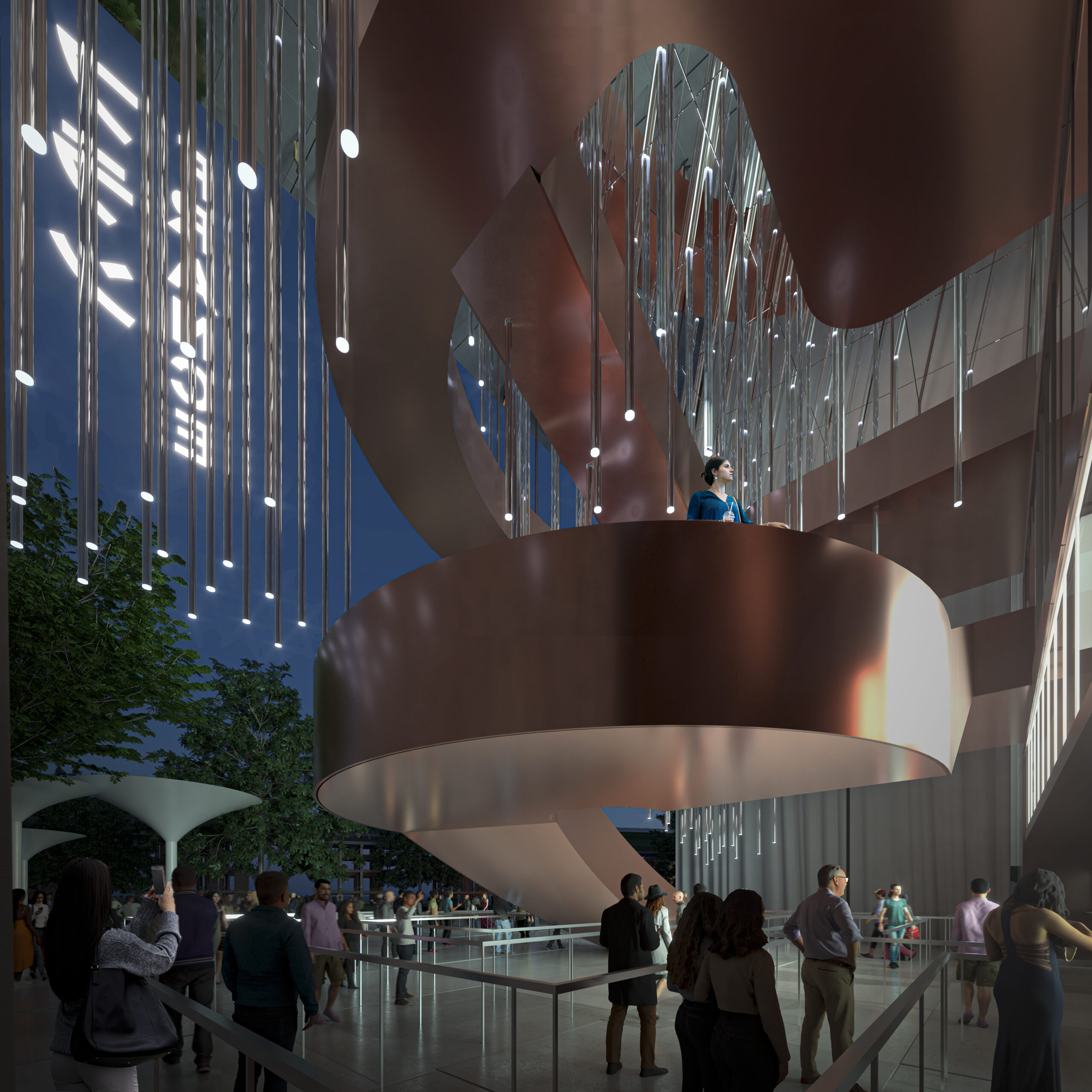
Image courtesy of Carlo Ratti Associati
The French Pavilion, titled Theatrum Naturae (“Theatre of Nature”), invites visitors on a sensory journey through France’s diverse ecosystems. Designed as a continuous path, the experience unfolds in three acts: Ascent, Discovery and Return, culminating in a rooftop garden that mirrors the country’s natural landscapes, from mountains to coastline. The pavilion explores how architecture can support coexistence between human and non-human life, reflecting Expo 2025’s sub-theme of “Empowering Life.”
Built using prefabricated components and natural materials, the structure follows a circular design logic to minimize environmental impact. The experience is both theatrical and reflective, encouraging visitors to consider their place within nature. Plans for the structure after the expo have not been detailed.
Qatar Pavilion
By Kengo Kuma & Associates, Osaka, Japan
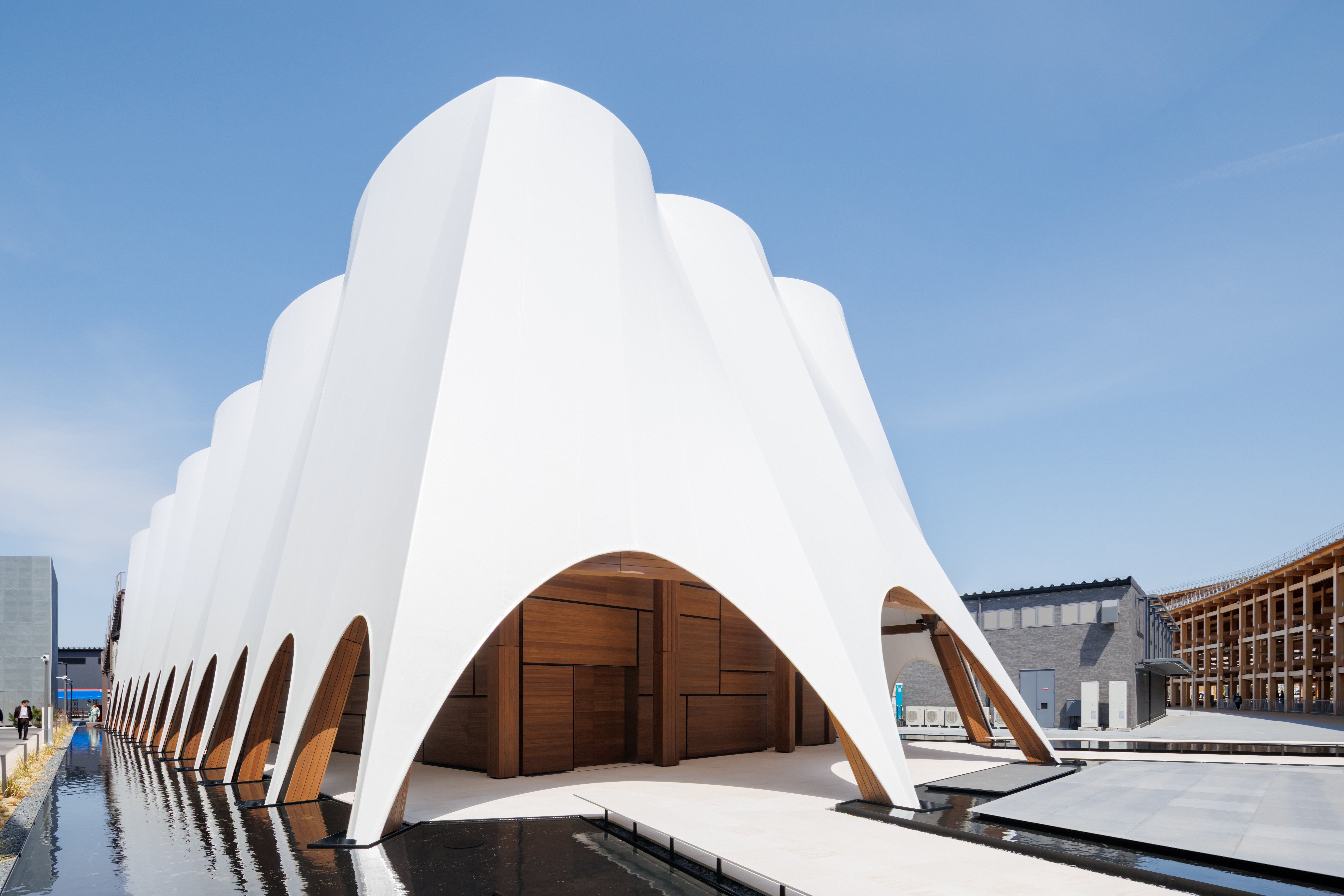
Photo by Iwan Baan, Courtesy of Qatar Museums

Photo by Iwan Baan, Courtesy of Qatar Museums
The Qatar Pavilion focuses on the sea as a shared space for trade, culture and exchange between Qatar and Japan. Designed by Kengo Kuma & Associates, who also designed the Portugal Pavilion, the structure uses traditional Qatari boat-building methods and Japanese wood joinery. A timber frame is covered in a white fabric that refers to dhow sails, giving the building a clear identity without heavy materials. Inside, a multimedia exhibition by OMA*AMO looks at Qatar’s 563-kilometer coastline and how it connects to the country’s cultural and economic goals. The second floor includes a small library and artworks from Qatar and Japan. The pavilion highlights Qatar’s development story, with no plans announced for its future use.
Netherlands Pavilion
By RAU Architects, Osaka, Japan
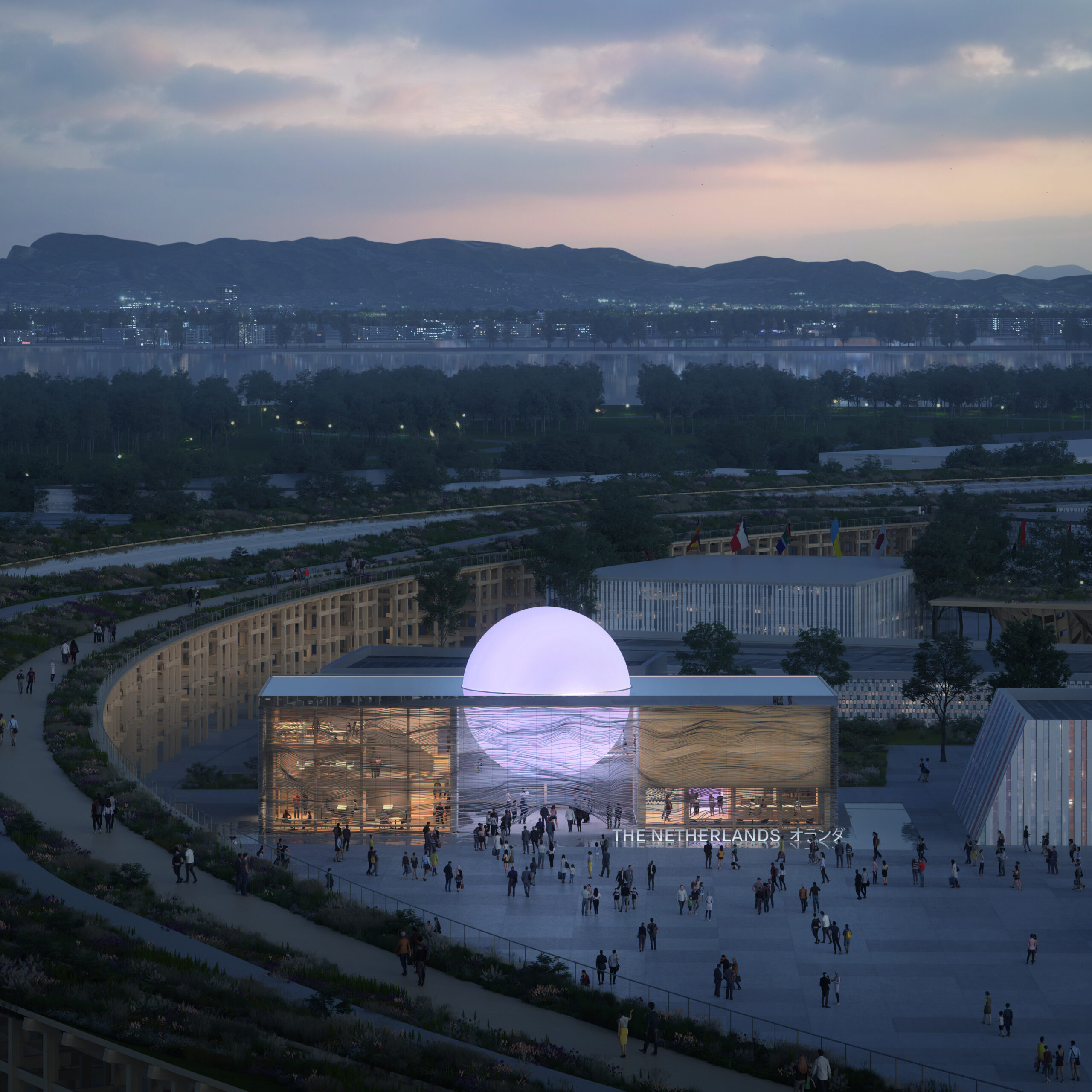
Photo by AND BV & Plomp
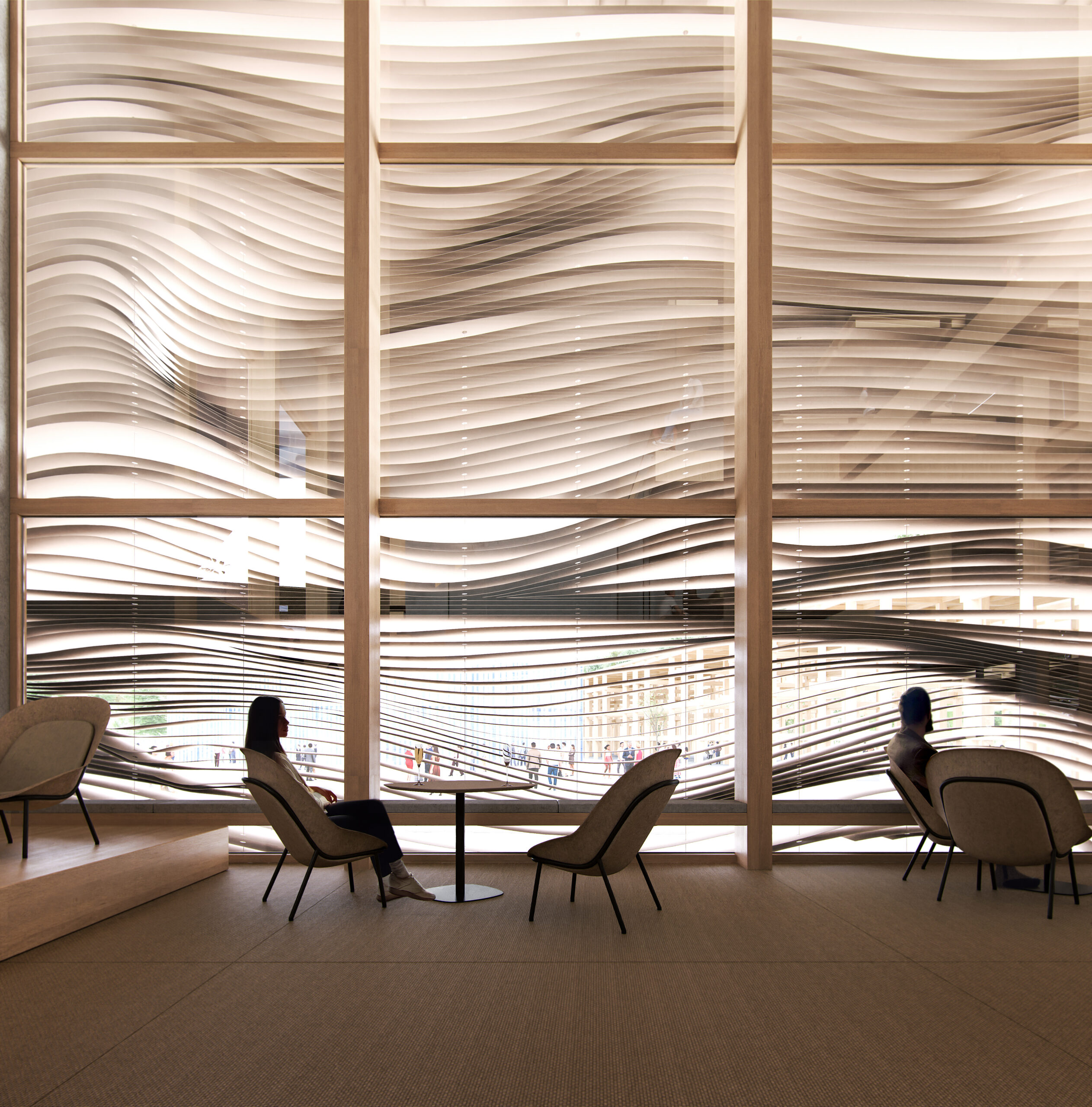
Photo by AND BV & Plomp
“Common ground” is the guiding theme of the Dutch participation at Expo 2025, shaped by a history of collective action in the face of rising water. At its center is a large mirrored sphere, inspired by Expo ’70’s Tower of the Sun. The structure is made from over 1,600 tons of steel — almost double what would be used in Europe — due to Japan’s strict regulations for earthquakes and typhoons. Visitors receive an Orb, a personal device that activates parts of the experience across exhibitions, events and shared spaces. Every element of the building is designed for disassembly and reuse. After the Expo, the pavilion will be taken apart, packed into containers and relocated for a new purpose, yet to be announced.
Bahrain Pavilion
By Lina Ghotmeh Architecture, Osaka, Japan
Another big name in the Expo 2025 lineup, Lina Ghotmeh brings a careful and material-focused approach to the Bahrain Pavilion. The design draws from the country’s maritime heritage, using 3,000 pieces of “un-engineered” wood joined without concrete or adhesives. Built with minimal foundations and cooled naturally by coastal winds, it’s one of the most resource-conscious structures at the Expo. Inside, a multi-sensory exhibition explores Bahrain’s legacy of trade, pearling and sea-based culture. The pavilion also features a café by chef Tala Bashmi, a business floor and a gift shop. All materials are intended for reuse, but no future plans have been announced.
Japan Pavilion
By Nikken Sekkei, Osaka, Japan
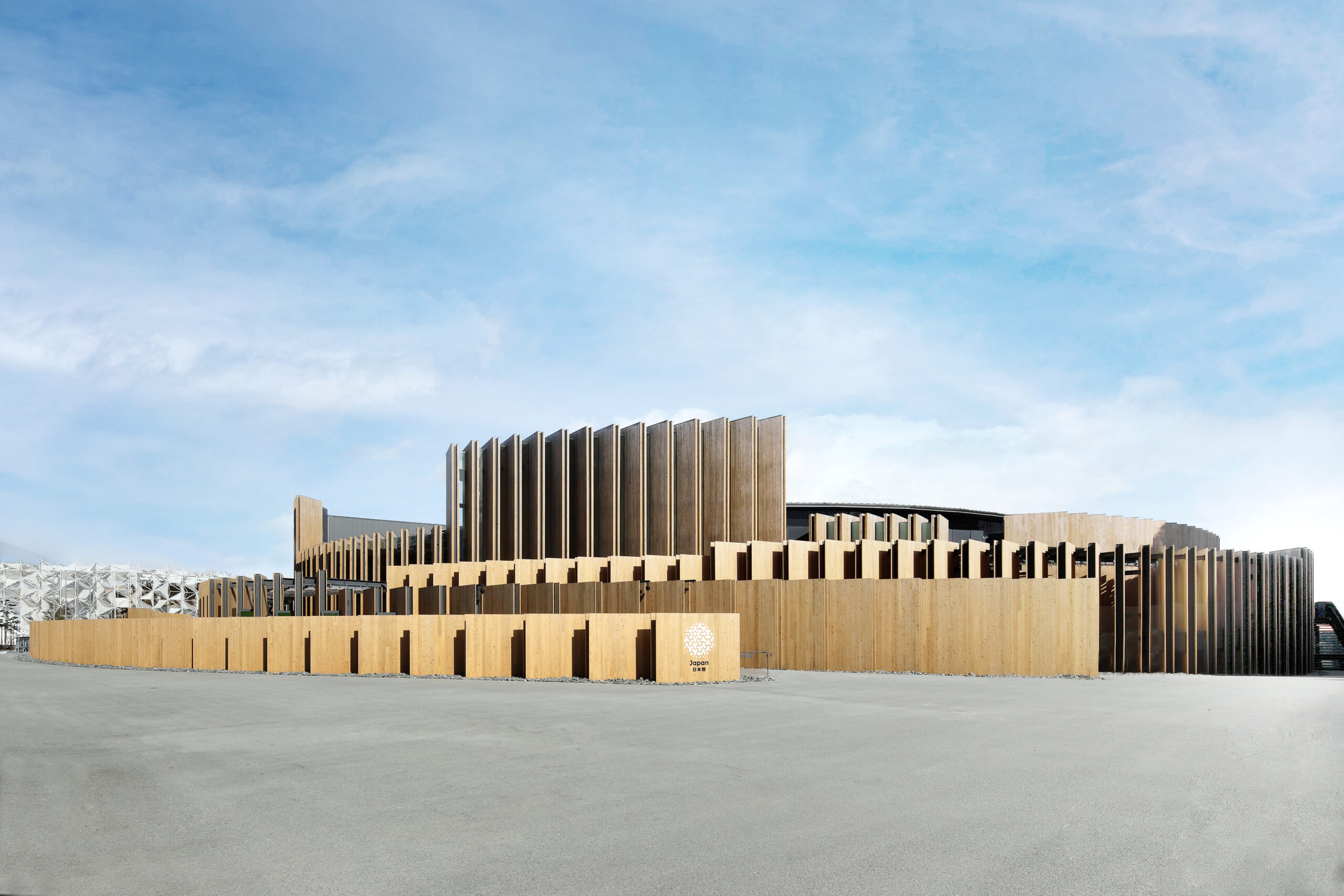
Courtesy of Ministry of Economy, Trade and Industry
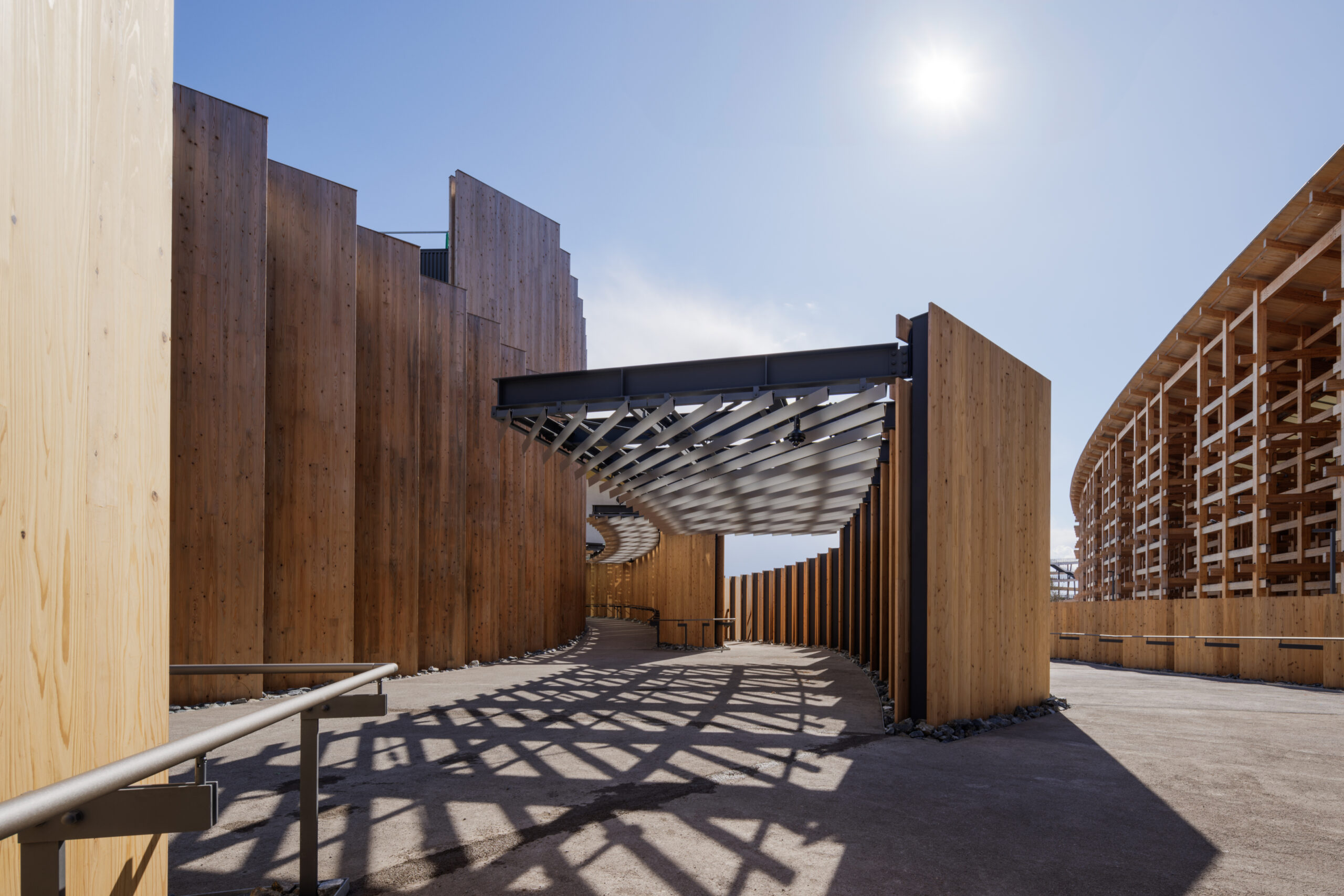
Courtesy of Ministry of Economy, Trade and Industry
As the host nation, Japan sets the tone for Expo 2025 with a pavilion that takes its message seriously. The structure follows the theme “Between Lives,” focusing on interdependence, regeneration and circular thinking. Built with 1,600 cubic meters of cross-laminated timber supported by steel, the circular building is both a stage and an exhibit. A biogas plant onsite converts food waste into energy and the CLT panels are designed for disassembly and reuse after the event. Nothing is hidden—mechanical systems, structural joints and material seams are all exposed, inviting visitors to see how architecture can support life without excess. It’s a thoughtful, stripped-back answer to the Expo’s big questions.
Uzbekistan Pavilion
By Atelier Brückner, Osaka, Japan
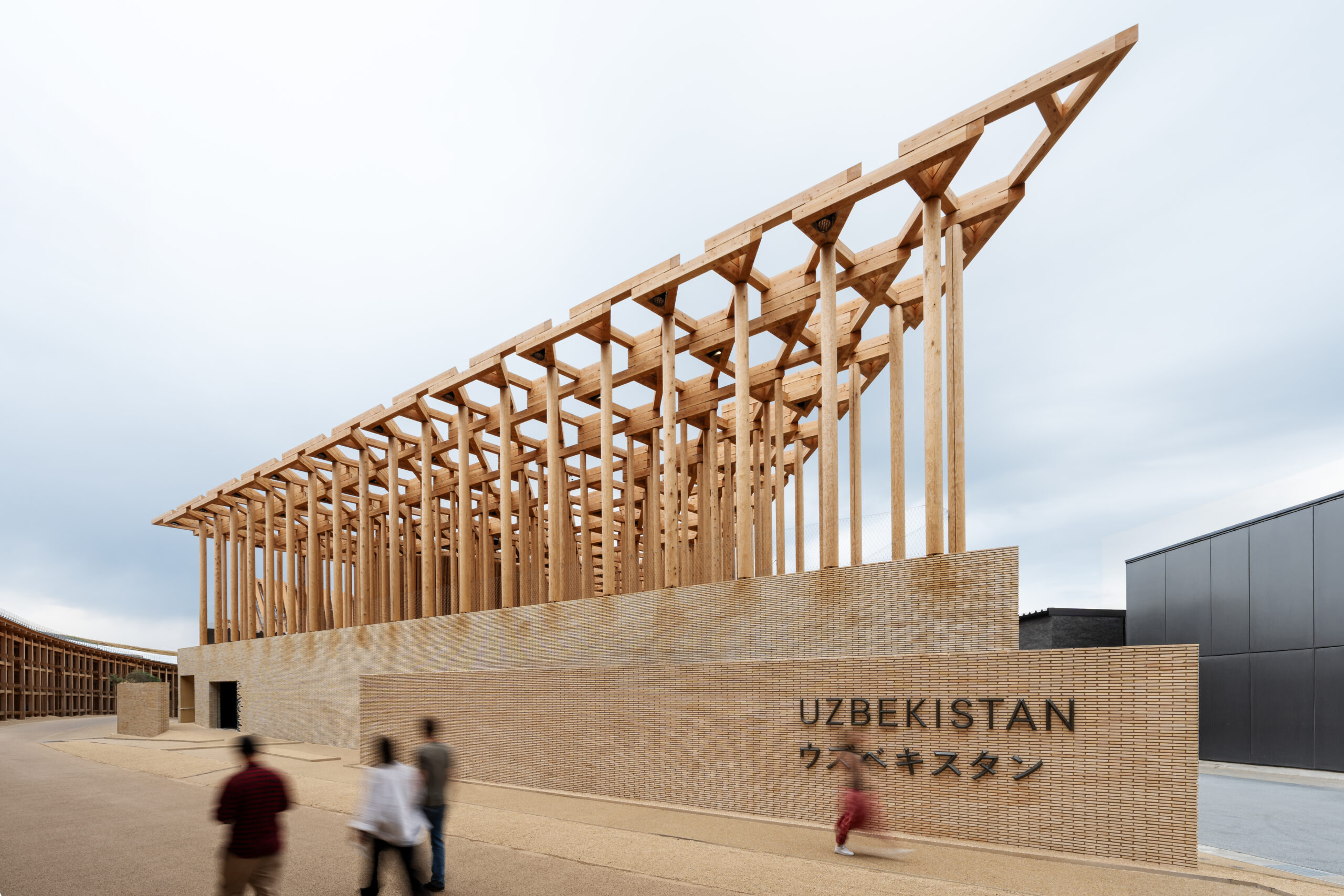
Image courtesy of Atelier Brückner
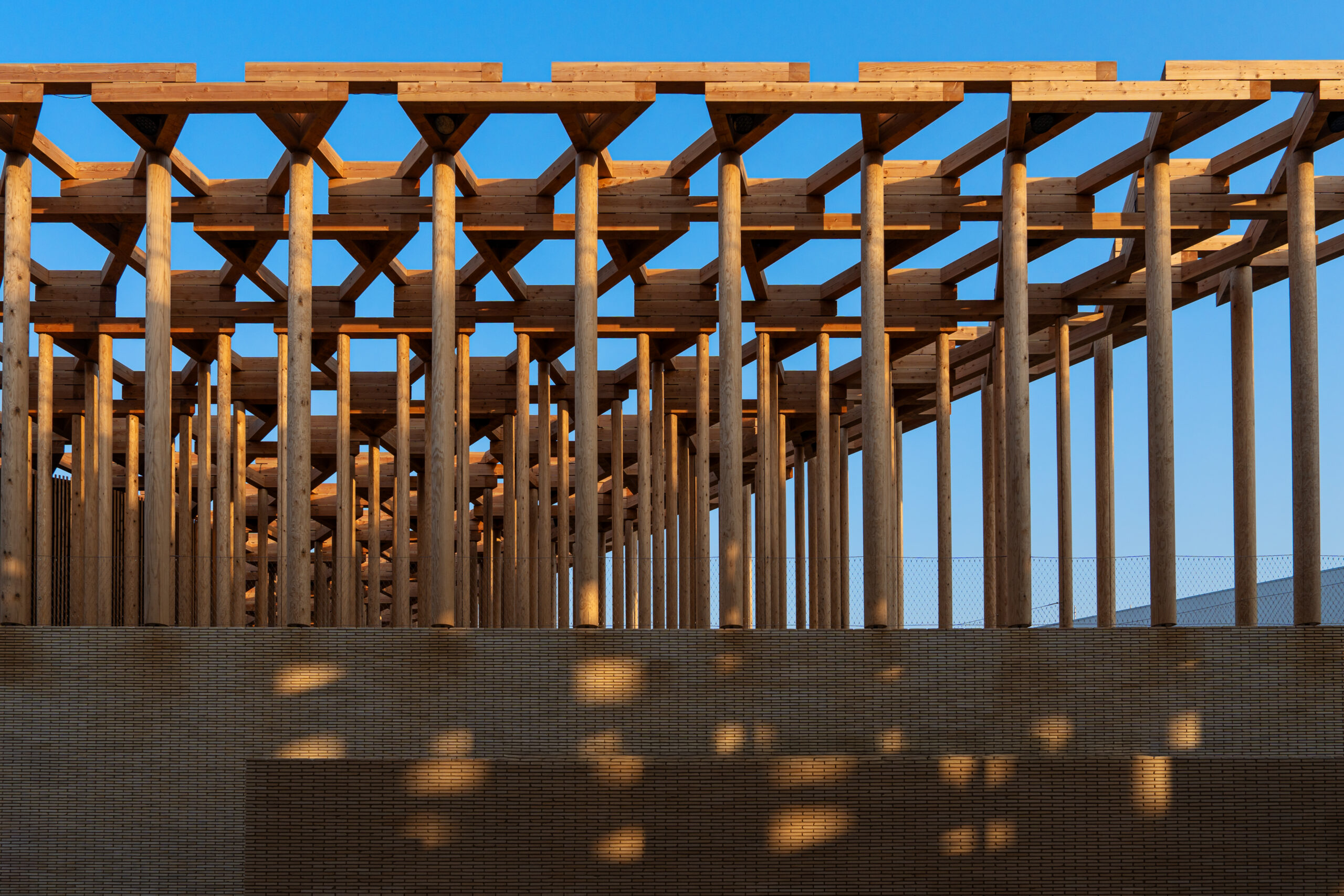
Image courtesy of Atelier Brückner
“Garden of Knowledge” brings together Uzbekistan’s heritage and future ambitions through a clear architectural narrative. A reclaimed brick base represents the earth, while a timber upper level—sourced from local Osaka forests — evokes growth and renewal. Visitors move through exhibits focused on education, sustainability and innovation, many tied to Uzbekistan’s Strategy 2030 goals. A central platform slowly rises through a 360-degree media installation, connecting the two levels in a way that’s both technical and symbolic. Each timber column includes an NFC tag, letting visitors trace its origin. After the Expo, the pavilion is set to be dismantled and rebuilt in Uzbekistan, where it will take on a second life as a studio, school or cultural space.
USA Pavilion
By Trahan Architects, Osaka, Japan
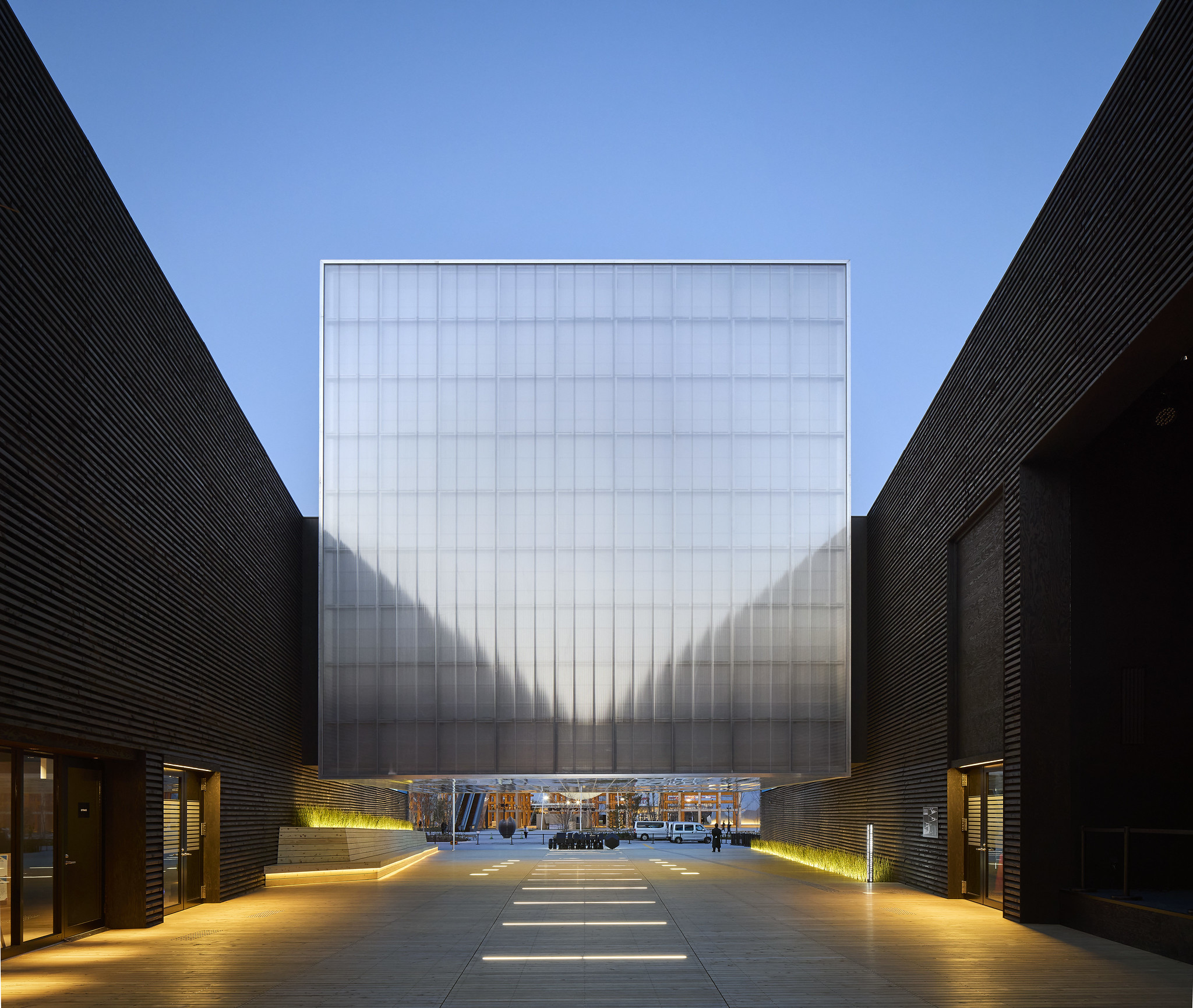
Photo by Hufton+Crow Photography
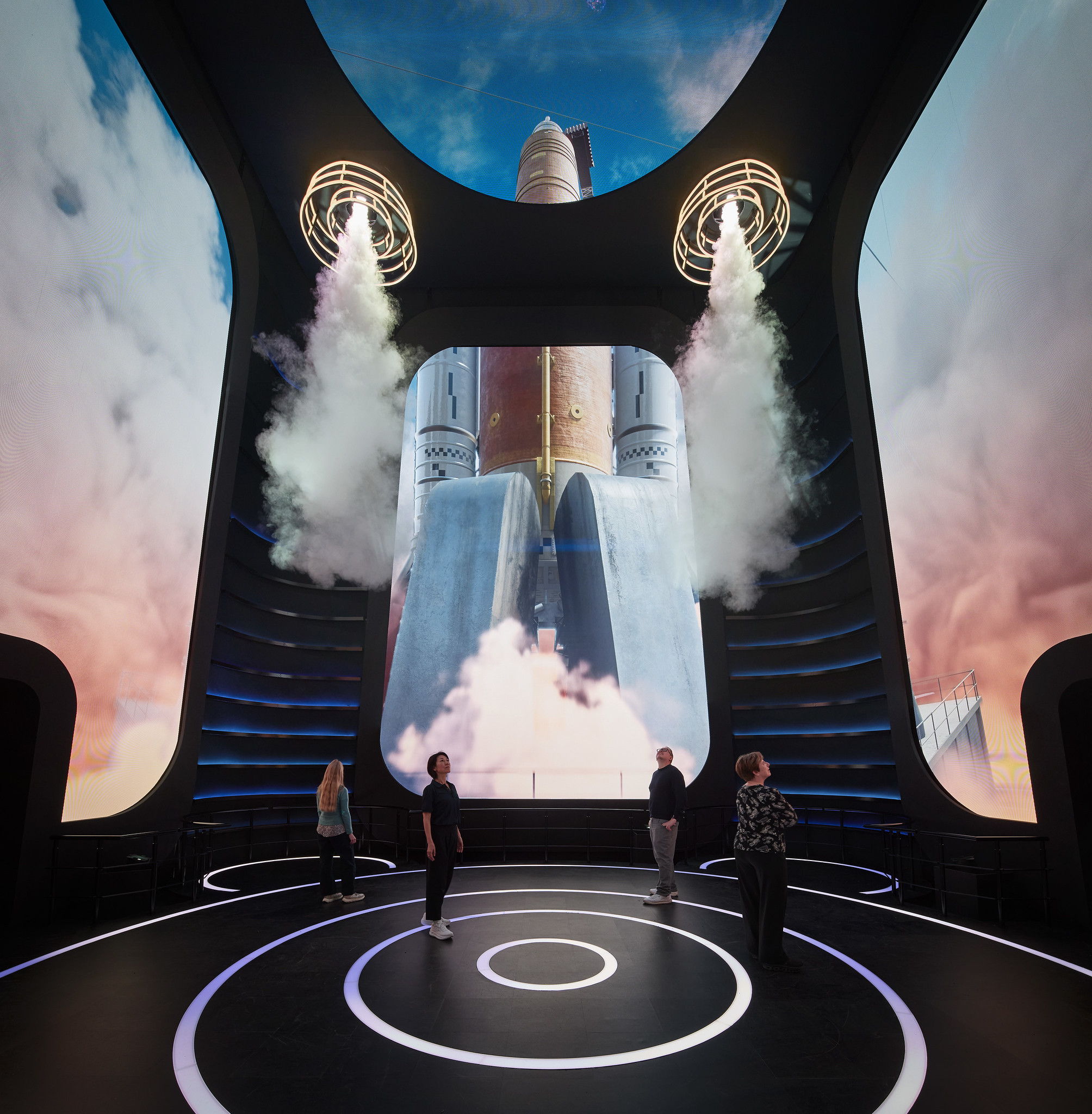
Photo by Hufton+Crow Photography
Positioned near the East Gate of the Expo site, this pavilion puts cultural exchange and public diplomacy front and center. An open-air courtyard hosts daily performances from artists across the United States, while an American garden showcases native flora. Inside, five themed exhibits highlight national achievements in space, technology, education and innovation. Visitors are guided by a virtual mascot and a multilingual team of Youth Ambassadors representing 45 states. The pavilion also includes a restaurant serving American cuisine and private event spaces. Its focus is on storytelling and engagement, presenting the U.S. as a partner in shaping the future. No public plans have been announced yet for what will happen to the structure after the Expo.
Switzerland Pavilion
By Manuel Herz Architekten, Osaka, Japan
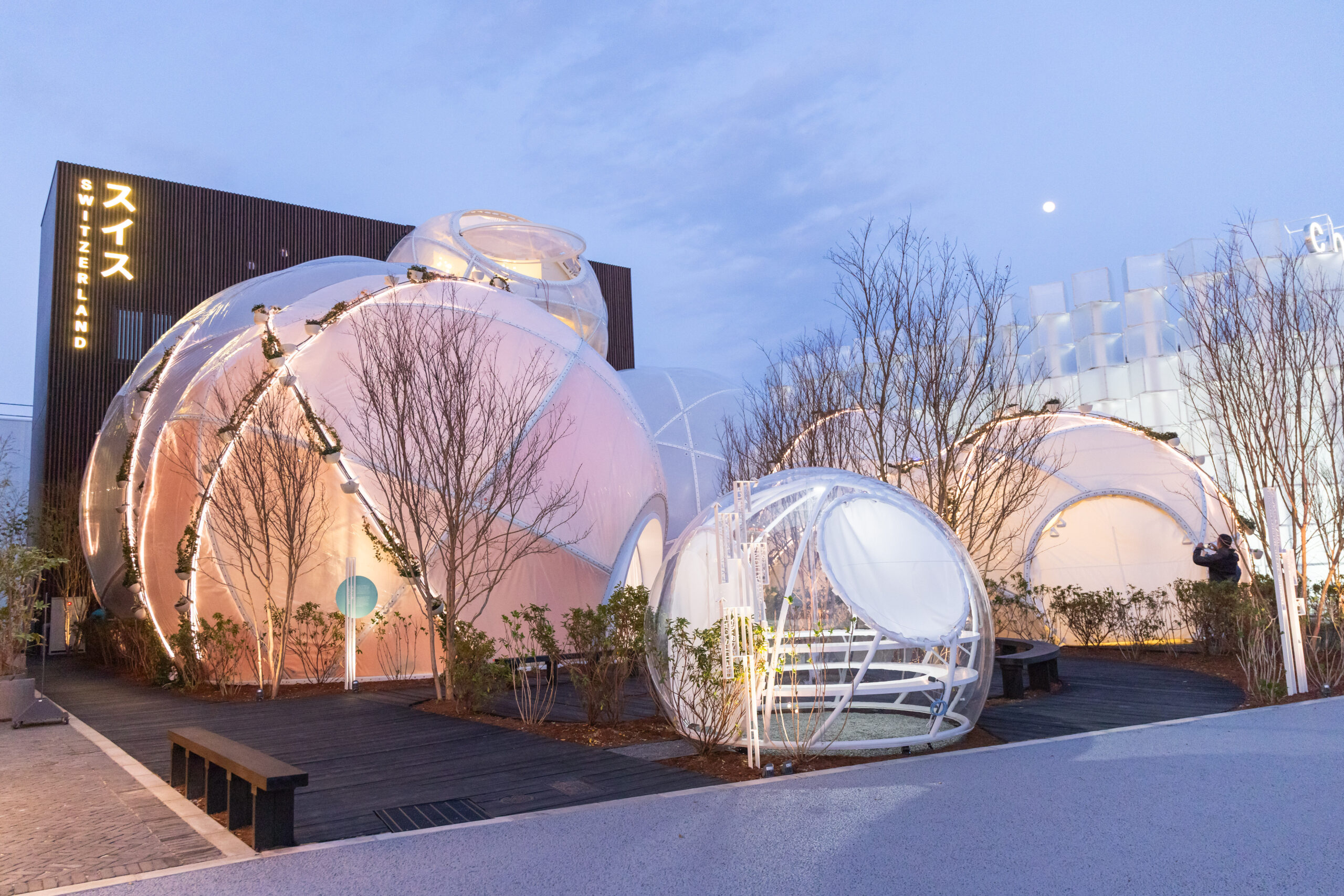
Photo courtesy of FDFA, Presence Switzerland
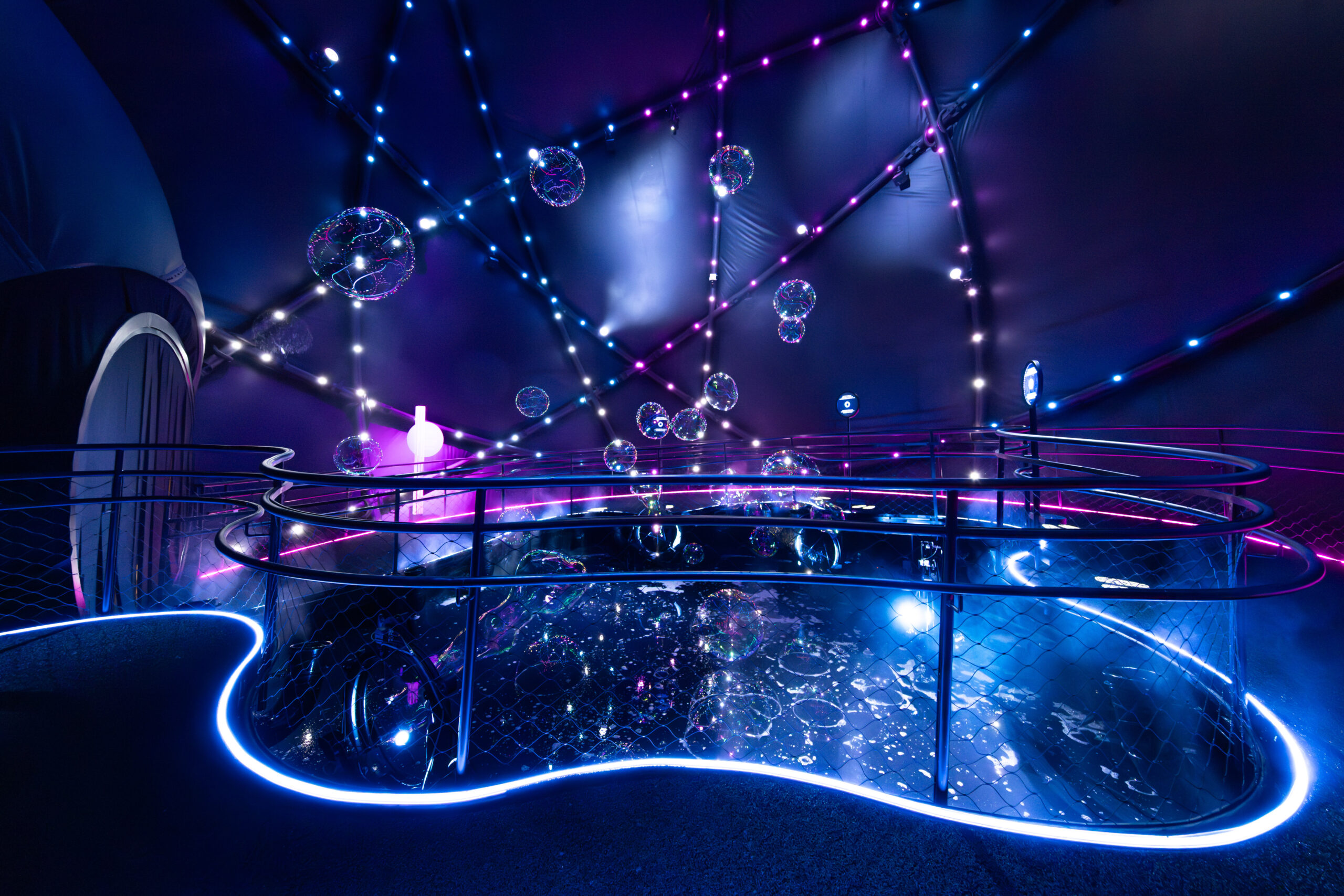
Photo courtesy of FDFA, Presence Switzerland
This pavilion has the smallest ecological footprint at Expo 2025, achieved through a lightweight membrane structure and efficient use of materials. Titled “From Heidi to High-Tech,” the exhibition explores Switzerland’s shift from Alpine traditions to a focus on cutting-edge innovation. Visitors move through four spheres that center on human potential, sustainability and future science. Projects include edible robotics, soft machines for ecosystem monitoring and a data-driven portal that explores scientific breakthroughs. The design prioritizes low-impact construction and immersive storytelling. A rooftop café and shop round out the experience with Swiss flavors and products. While no post-Expo plan is confirmed, the modular structure hints at a future beyond Osaka.
Luxembourg Pavilion
By STDM architects & urban planners, Osaka, Japan
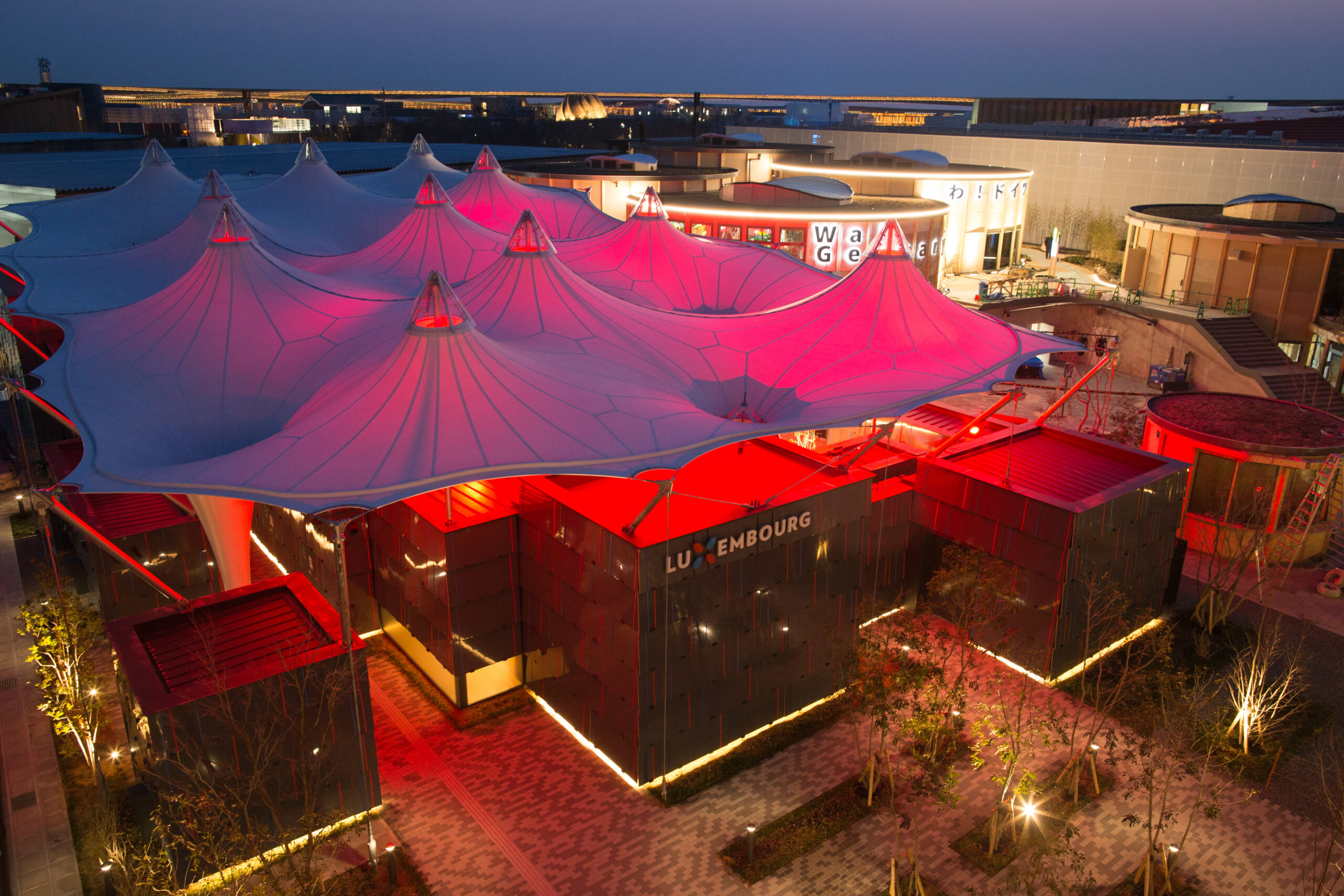
Photo by Ondrej Piry
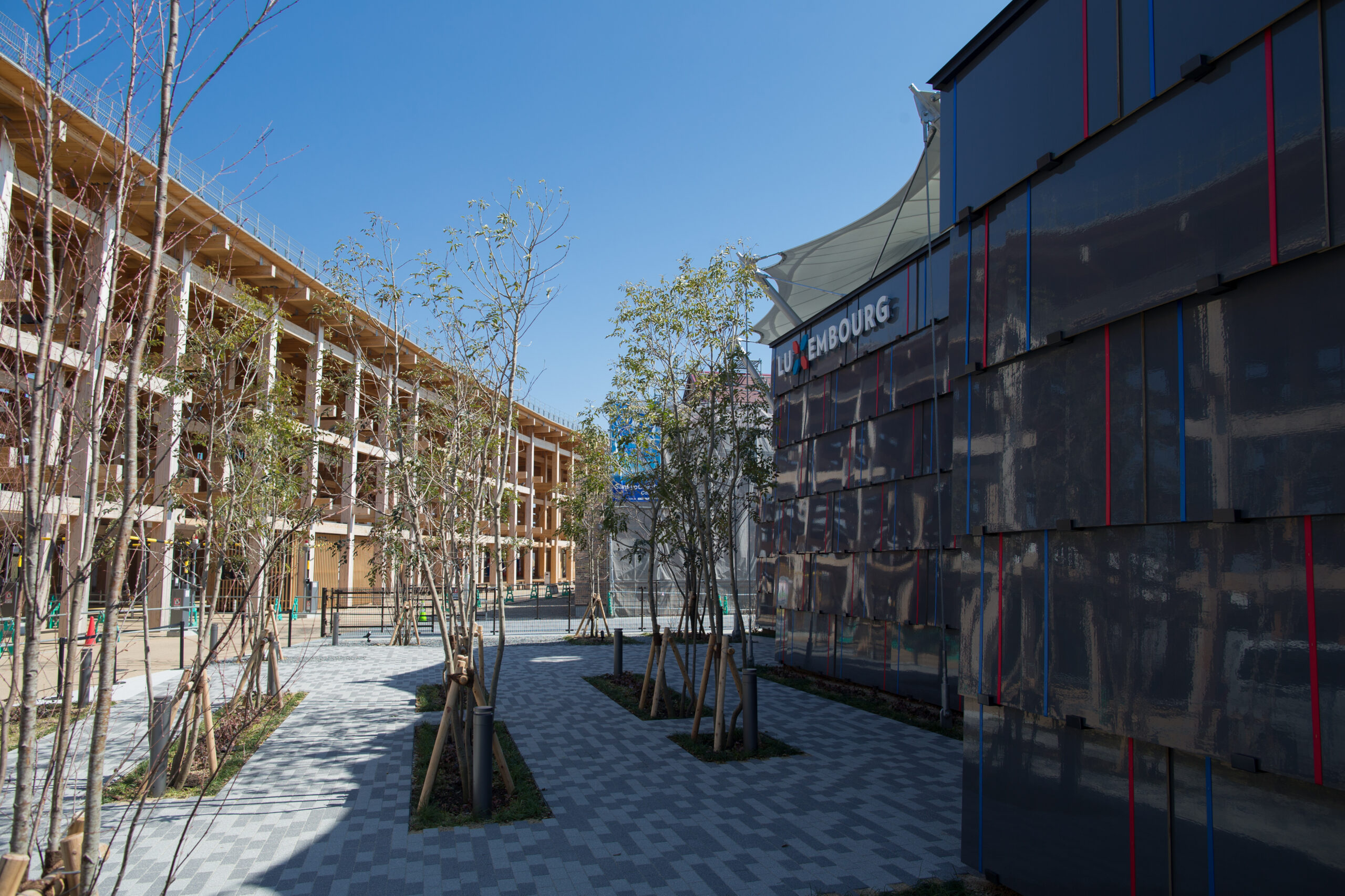
Photo by Ondrej Piry
Small but mighty, “Doki-Doki Lux” presents Luxembourg as a country with a broad global view. Visitors move through a series of sculpted volumes reflecting three core ideas: unicity, diversity and territory. A stretched canvas roof responds to light and daily events, acting as a living signal of the pavilion’s energy. Inside, the path mirrors Luxembourg’s layered identity — from global innovation to local tradition. Built on a Japanese tatami grid, the structure is designed for low environmental impact and complete disassembly, with components intended for reuse in future Japanese buildings. It’s a compact, expressive pavilion that treats circularity as part of its architectural and cultural story.
Architizer’s Vision Awards are back! The global awards program honors the world’s best architectural concepts, ideas and imagery. Start your entry today, and take advantage of the Early Entry prices!

